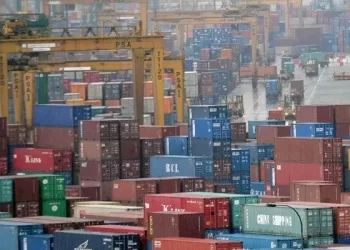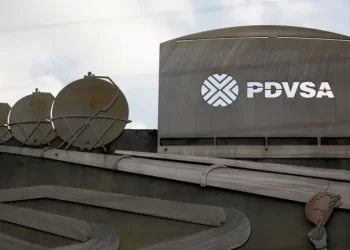MEXICO CITY (news agencies) — Gliding above her neighborhood in a cable car on a recent morning, Sonia Estefanía Palacios Díaz scanned a sea of blue and black water tanks, tubes and cables looking for rain harvesting systems.
“There’s one!” she said, pointing out a black tank hooked up to a smaller blue unit with connecting tubes snaking up to the roof where water is collected.
“I’m always looking for different rainwater harvesting systems,” she said, smiling. “I’m also always looking for places to install one.”
Driven by prolonged drought and inconsistent public water delivery, many Mexico City residents are turning to rainwater. Pioneering company Isla Urbana, which does both nonprofit and for-profit work, has installed more than 40,000 rain catchment systems across Mexico since the company was founded 15 years ago. And Mexico City’s government has invested in the installation of 70,000 systems since 2019, still a drop in the bucket for the sprawling metropolis of around 9 million.
But there’s little education and limited resources to maintain the systems after installation, leading the systems to fall into disuse or for residents to sell off the parts.
Enter Palacios Díaz and a group of other women who make up the cooperative Pixcatl, which means harvest of water in the Indigenous Nahuatl language.
In lower-income areas like Iztapalapa — Mexico City’s most populous borough — the group tries to keep systems functioning while also educating residents on how to maintain them. That includes brainstorming their own designs and providing residents with low-cost options for additional materials.
Palacios Díaz has lived with water scarcity in Iztapalapa as far back as she can remember. “Here, people will get in line starting at 3 in the morning to get water (from distribution trucks) up until 2 in the afternoon,” she said from her mother’s home. “There was a time in which we went for more than a month without a regular supply of water.”
Earlier this year, the reservoirs that supply the capital were perilously low. Authorities reduced the amount of water being released and neighborhoods not accustomed to water scarcity faced a new reality.
Entering the rainy season, most of Mexico was in moderate to severe drought. Mexico’s reservoirs are beginning to approach half their capacity, but they haven’t filled by much, according to recent reports by the National Water Commission.
The country depends on the rains — which normally peter out in October — to fill the reservoirs, but the drought has taken them so low that that might take years.
That’s encouraged many Mexicans like Palacios Díaz to turn to rainwater harvesting.
At the height of the pandemic, she taught classes on urban farming and water harvesting at a local community space. It wasn’t until her students said they wanted to learn how to install and understand their own systems that she seriously considered taking a government course. After enrolling in a training program in 2022 to become an installer, she met other young women from the city interested in water harvesting systems and they formed the cooperative.
Near the skirt of a volcano on the fringes of Iztapalapa, Lizbeth Esther Pineda Castro, another member of the cooperative, and Palacios Díaz adjusted a ladder to reach the roof of a small house. The two-story home inherited by Sara Huitzil Morales and her niece sits in Iztapalapa’s Buenavista neighborhood.
Huitzil’s mother had qualified for a free water harvesting system from Mexico City’s government in 2021. After the installation, Huitzil requested Pixcatl’s maintenance since she wasn’t sure how to take care of the system.
Sporting their navy polos with the Pixcatl logo, Pineda and Palacios Díaz cleared debris off the roof so the system only collects fresh rain.
“We also add a little bit of soap and chlorine to clean the pipes,” said Palacios Díaz as she swept the liquid down a connecting tube that leads to the harvesting system.
Downstairs, they joined the other members of the cooperative in a courtyard to look at the giant 2,500-liter water tank, enough to serve Huitzil’s needs for several months when filled. The colossal container stood nearly as tall as Palacios Díaz. Another cooperative member cleared a filter of leaves and dirt.
Last, Palacios Díaz plopped in a couple of chlorine pills to clean and disinfect the water. The frequency of the entire maintenance process depends on several factors, including how much water is in the tank, how much has been used, and whether it has rained.
Huitzil said before the harvesting system, she endured water shortages and rationing. The publicly available water was consistently dirty and “dark like chocolate.” She often used the water that remained from doing laundry to clean the courtyard. Sometimes when dirty water would arrive, she would put it in buckets and wait for the dirt to settle to the bottom, using the cleanest for showering.









